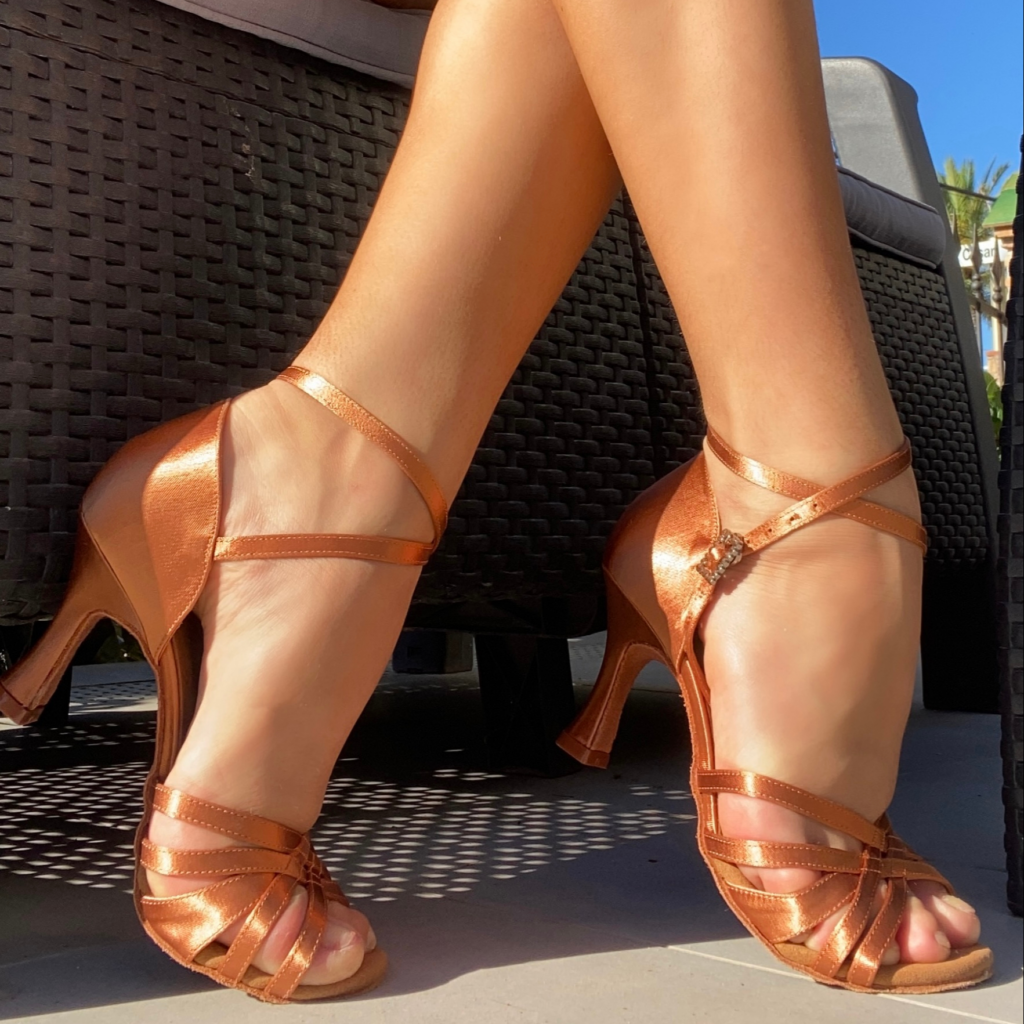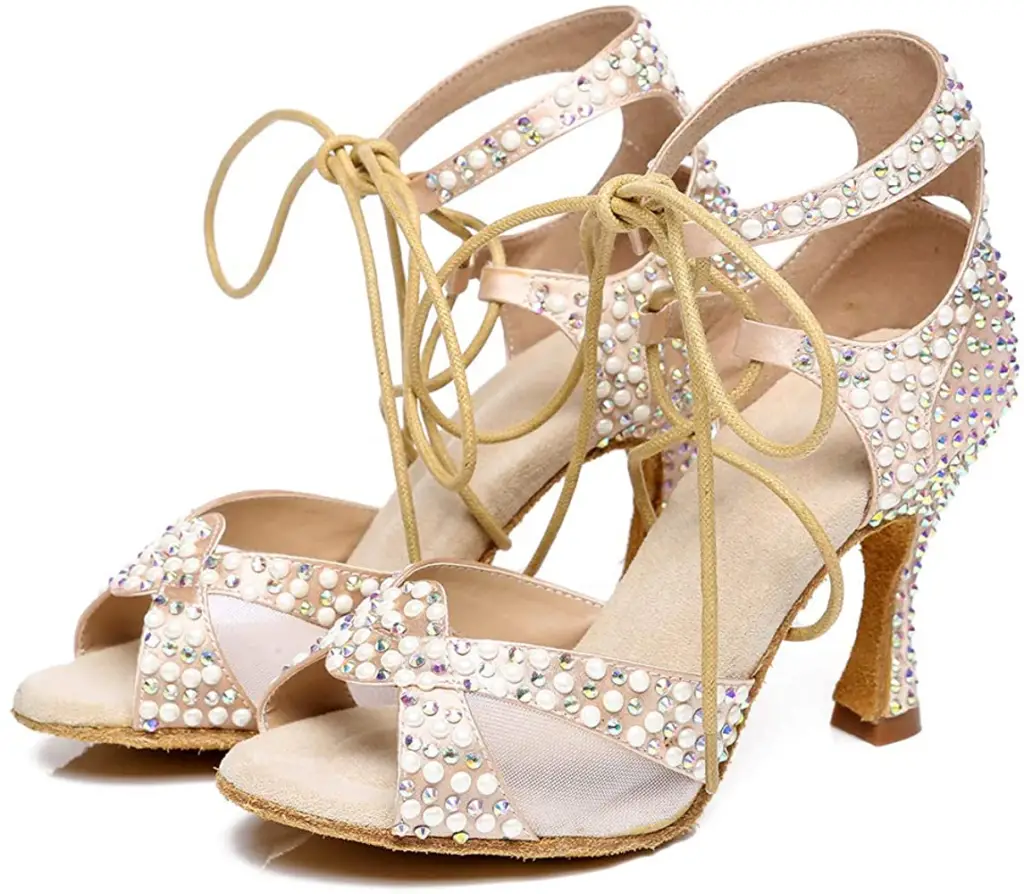Dancing heels are a type of high-heeled shoe specifically designed for dancing. They are typically made with a sturdy and supportive heel that allows dancers to maintain balance and execute dance steps with ease.
These heels can vary in height, with some styles featuring a lower heel that is easier to dance in, while others may have a higher heel for a more dramatic look. The sole of the shoe is also designed to provide traction and support for dancers as they move across the dance floor.
Dancing heels can be worn for a variety of dance styles, including ballroom, salsa, tango, and many others. They are often worn by both men and women and can come in various colors and styles to match different dance costumes and outfits.
Table of Contents
What are dance heels?

Dance heels typically have a sturdy heel that is designed to provide support and balance while dancing. They can vary in height, with some styles featuring a lower heel that is easier to dance in, while others may have a higher heel for a more dramatic look.
Let’s have a look in detail at what dance heels are:
- The shape of the dance heel:
Dance heels typically have a pointed or slightly rounded toe that allows the foot to extend and point fully. This helps to create clean lines and a visually appealing look while dancing.
- Height of the dance heel:
For beginner dancers or those who are just starting to wear dance heels, a lower heel height of around 1 to 2 inches is recommended. This allows for easier movement and balance while still providing some added height and elegance.
For more advanced dancers or those who are comfortable dancing in higher heels, a heel height of around 2 to 3 inches is common. This can help to create a more dramatic and visually appealing look while dancing.
In some dance styles, such as Latin dance, a higher heel of 3 to 4 inches may be preferred. This can help to create longer lines and a more dramatic look while executing complex footwork and turns.
- Types of dance heels:
There are several types of dance heels that are designed for specific dance styles and preferences of the dancer. The most common types of dance heels are Ballroom dance heels, Latin dance heels, Tango dance heels, Practice dance heels, Performance dance heels, and Social dance heels.
- Balance your weight while wearing dance heels:
Balancing your body weight while wearing dance heels can be challenging, especially for beginners. Click the below button to view 7 tips to help you maintain balance and stability while wearing dance heels.
- Dance heels are perfect for every occasion?:
Dance heels can be a great option for dancing and formal events, but they may not be the perfect choice for every occasion. Consider the comfort, dress code, type of event, terrain, and your personal preference when deciding whether to wear dance heels.
Types of dance heels
1. Ballroom dance heels

These dance heels are often low-heeled shoes that are designed for ballroom dance styles such as waltz, foxtrot, and quickstep. They are typically closed-toe and have a smooth soles to allow for easy gliding across the dance floor.
2. Tango dance heels

Tango dance heels are typically mid to high-heeled shoes that are designed for the Argentine tango dance style. They often feature a pointed toe and a sturdy heel that allows for balance and stability while executing intricate footwork.
3. Latin dance heels

These heels are typically high-heeled shoes that are designed for Latin dance styles such as salsa, samba, and rumba. They are often open-toe and feature a more flexible sole to allow for greater movement and flexibility while executing complex footwork.
4. Practice dance heels

These heels are often low-heeled shoes that are designed for practice sessions or long hours of dancing. They are typically comfortable and supportive, with a flexible sole that allows for easy movement and balance.
5. Performance dance heels

Performance high-heeled shoes are designed for performances or competitions. They may feature intricate designs, glitter or rhinestone embellishments, and other details to make the dancer stand out on stage.
6. Social dance heels

These heels are often mid to high-heeled shoes that are designed for social dance events such as parties or nightclubs. They are typically comfortable and stylish, with a flexible sole that allows for easy movement and balance.
How to walk(dance) in dance heels

Walking in dance heels can feel challenging, especially if you’re not used to wearing high heels. But if you are a newbie in wearing high heels then follow these steps.
- Step one:
Begin by taking small steps in your dance heels. This will help you get used to the height and balance of the shoes.
- Step two:
Make sure that your weight is evenly distributed on both feet. Avoid leaning too far forward or backward, as this can throw off your balance.
- Step three:
Engage your core muscles by pulling your belly button in towards your spine. This will help you maintain good posture and balance while walking.
- Step four:
Use your toes to lead the way when walking in dance heels. This will help you maintain balance and avoid stumbling.
- Step five:
Walk at a slower pace than you normally would, especially when first getting used to your dance heels. This will help you maintain control and balance.
- Step six:
Practice walking in your dance heels on different surfaces, such as carpet, hardwood floors, and concrete. This will help you get used to the feel of the shoes on different surfaces. When walking in dance heels, use a heel-toe technique. Place your heel down first, followed by the ball of your foot and your toes.
When to wear dance heels?

Dance heels are typically worn for dancing, especially in formal or semi-formal settings. Here are some occasions where dance heels may be appropriate:
- Weddings: Dance heels are a popular choice for weddings, especially for brides and bridesmaids dancing at the reception.
- Galas and formal events: Dance heels are often worn to formal events such as galas, charity events, and awards ceremonies.
- Dance performances: Professional dancers often wear dance heels for concerts, especially in styles such as Latin, ballroom, and salsa dancing.
- Nightclubs and parties: Dance heels are a popular choice for nights out at nightclubs or parties, especially if dancing will be involved.
It’s important to consider the dress code and formality of the occasion when deciding whether to wear dance heels. For example, dance heels may not be appropriate for casual events such as outdoor picnics or sporting events. Additionally, if you’re not comfortable wearing heels or are unsure about the dress code, it’s always better to err on the side of caution and choose a more comfortable or conservative shoe option.
Conclusion
Dance heels are typically worn for dancing at formal or semi-formal events such as weddings, galas, and dance performances. Consider the dress code and formality of the occasion when deciding whether to wear dance heels and always prioritize comfort and safety when choosing footwear.
Cover photograph: joheela-shop.com











